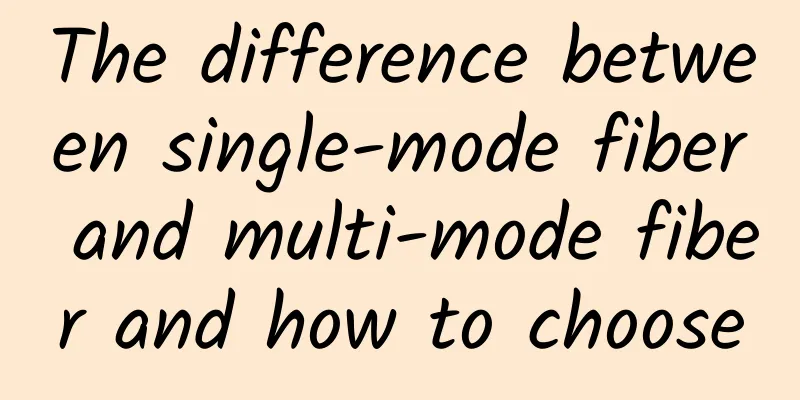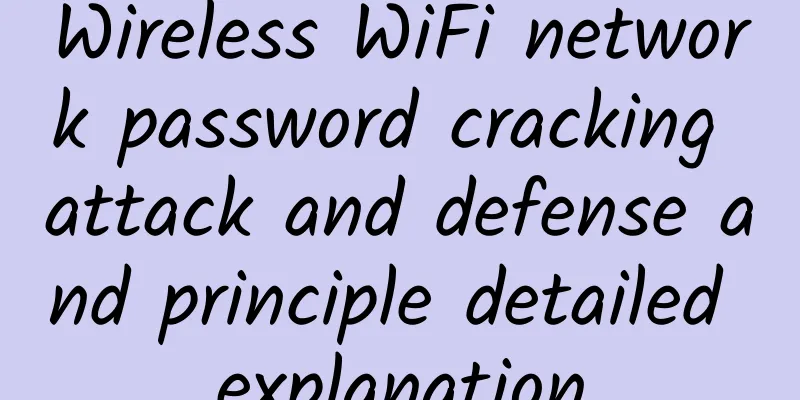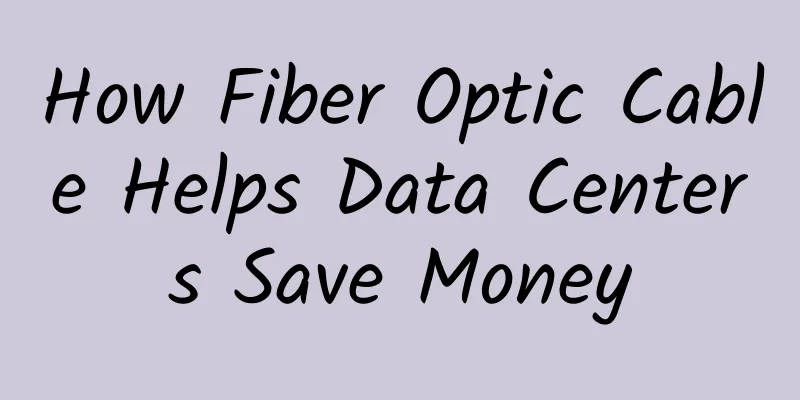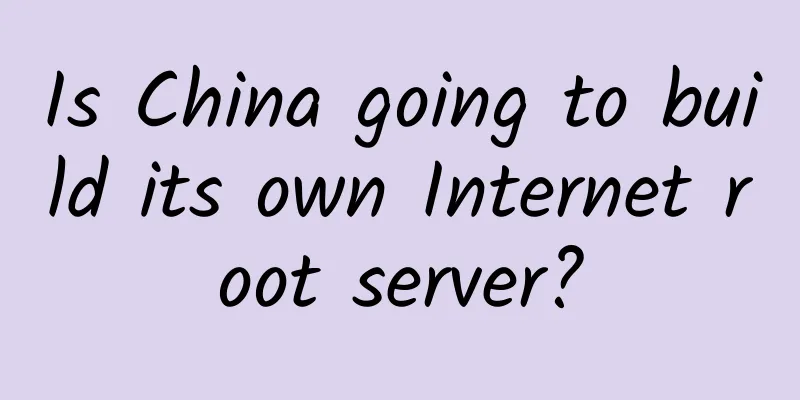The difference between single-mode fiber and multi-mode fiber and how to choose

|
1. What are single-mode and multi-mode optical fibers? What are their differences? The concepts of single-mode and multi-mode are used to classify optical fibers according to their propagation modes: the concepts of multi-mode optical fibers and single-mode optical fibers. We know that light is an electromagnetic wave with a very high frequency (3×1014Hz). When it propagates in an optical fiber, according to theories such as wave optics, electromagnetic fields, and the solution of Maxwell's equations, it is found that:
(1) Multimode fiber When the geometric dimensions of an optical fiber (mainly the core diameter d1) are much larger than the wavelength of light (about 1 μm), there will be dozens or even hundreds of propagation modes in the optical fiber. Different propagation modes have different propagation speeds and phases, resulting in time delays and light pulse broadening after long-distance transmission. This phenomenon is called optical fiber mode dispersion (also called inter-modal dispersion). Modal dispersion will narrow the bandwidth of multimode optical fiber and reduce its transmission capacity, so multimode optical fiber is only suitable for smaller capacity optical fiber communications. The refractive index distribution of multimode optical fiber is mostly parabolic distribution, that is, graded refractive index distribution. Its core diameter is about 50μm. (2) Single-mode fiber When the geometric dimensions of an optical fiber (mainly the core diameter) are close to the wavelength of light, such as when the core diameter d1 is in the range of 5 to 10 μm, the optical fiber only allows one mode (fundamental mode HE11) to propagate in it, and all other higher-order modes are cut off. Such an optical fiber is called a single-mode optical fiber. Since it has only one mode of propagation, it avoids the problem of mode dispersion, so single-mode fiber has a very wide bandwidth and is particularly suitable for large-capacity fiber-optic communications. Therefore, to achieve single-mode transmission, the parameters of the fiber must meet certain conditions. Through the formula calculation, it is found that for NA=0.12 fiber to achieve single-mode transmission above λ=1.3μm, the radius of the fiber core should be ≤4.2μm, that is, its core diameter d1≤8.4μm. Since the core diameter of single-mode optical fiber is very small, more stringent requirements are placed on its manufacturing process. 2. What are the advantages of using optical fiber?
3. How to choose optical cable? In addition to the number of optical fiber cores and the type of optical fiber, the selection of optical cable also depends on the structure and outer sheath of the cable according to the environment in which the cable is used.
4. In the connection of optical fiber, how to choose the different applications of fixed connection and active connection? The active connection of optical fiber is realized through optical fiber connectors. An active connection point in an optical link is a clear dividing interface. In the choice between active connection and fixed connection, the advantages of fixed connection are low cost and low optical loss, but poor flexibility, while active connection is the opposite. When designing a network, it is necessary to flexibly choose the use of active and fixed connections according to the situation of the entire link to ensure both flexibility and stability, so as to give full play to their respective advantages. The active connection interface is an important interface for testing, maintenance, and change. Active connection is relatively easier to find the fault point in the link than fixed connection, which increases the convenience of replacing faulty components, thereby improving system maintainability and reducing maintenance costs. 5. Fiber is getting closer and closer to user terminals. What is the significance of "fiber to the desktop" and what factors should be considered when designing the system? In the application of horizontal subsystems, "fiber to the desktop" and copper cables are complementary and indispensable. Fiber has its own unique advantages, such as long transmission distance, stable transmission, no influence of electromagnetic interference, high bandwidth support, and no electromagnetic leakage. These characteristics make fiber play an irreplaceable role for copper cables in some specific environments:
The application of optical fiber is gradually extending from the backbone or computer room to desktop and residential users, which means that more and more users who do not understand the characteristics of optical fiber are beginning to come into contact with optical fiber systems. Therefore, when designing optical fiber link systems and selecting products, full consideration should be given to the current and future application requirements of the system, using compatible systems and products, facilitating maintenance and management as much as possible, and adapting to the ever-changing actual on-site conditions and user installation requirements. 6. Can fiber optic connectors be terminated directly onto 250 μm fiber? No. Loose tube optical cables contain bare optical fibers with an outer diameter of 250 μm, which are very small and fragile. They cannot fix the optical fiber, are not strong enough to support the weight of the optical fiber connector, and are very unsafe. To terminate the connector directly on the optical cable, at least a 900 μm tight tube layer is required to wrap the 250 μm optical fiber outside to provide protection for the optical fiber and support the connector. 7. Can an FC connector be directly connected to an SC connector? Yes, it is just a different method of connection between two different types of connectors. If you need to connect them, you must choose a mixed adapter. Using the FC/SC adapter, you can connect the FC connector and SC connector at both ends. This method requires that the connectors should be flat-polished. If you must connect an angled (APC) connector, you must use the second method to prevent damage. The second method is to use a hybrid patch cord and two connection adapters. A hybrid patch cord is one that uses different fiber connector types at both ends. These connectors will connect to where you need them, so you can use a universal adapter in the patch panel to connect to the system, but it will increase the system attenuation budget by one connector pair. 8. The fixed connection of optical fiber includes mechanical optical fiber splicing and thermal fusion splicing. What are the selection principles of mechanical optical fiber splicing and thermal fusion splicing? Mechanical fiber splicing is commonly known as fiber cold splicing, which refers to a fiber splicing method that does not require a hot melt splicer, but uses simple splicing tools and mechanical connection technology to achieve a single-core or multi-core optical fiber connection. In general, when splicing optical fibers with a small number of cores and dispersed locations, it is advisable to use mechanical splicing instead of hot melt splicing. Mechanical fiber splicing technology was often used in engineering practices such as line repair and small-scale applications in special occasions in the early days. In recent years, with the large-scale deployment of fiber to the desktop and fiber to the home (FTTH), people have realized the significance of mechanical fiber splicing as an important fiber splicing method. For fiber-to-the-desktop and fiber-to-the-home applications with large numbers of users and scattered locations, when the user scale reaches a certain level, the complexity of construction and the construction personnel and fusion splicers cannot meet the time requirements for users to open services. Mechanical fiber splicing provides a cost-effective fiber splicing solution for large-scale fiber deployment due to its simple operation, short personnel training cycle, and small equipment investment. For example, in high places in corridors, small spaces, insufficient lighting, and inconvenient on-site power supply, mechanical fiber splicing provides a convenient, practical, fast, and high-performance fiber splicing method for design, construction, and maintenance personnel. 9. How do the requirements for fiber optic splice closures in fiber-to-the-home systems differ from those used by telecom operators in outdoor lines? First, in the FTTH system, it is necessary to reserve the location for the installation and termination of the optical splitter, and to accommodate and protect the jumpers in and out of the optical splitter in the junction box according to actual needs. Because the actual situation is that the optical splitter may be located in facilities such as the optical cable junction box, optical cable junction box, distribution box, ODF, etc., and the optical cable is terminated and distributed in them. Secondly, for residential areas, optical cable junction boxes are more often installed underground, so higher requirements are placed on the underground performance of the optical cable junction boxes. In addition, in fiber-to-the-home projects, you may need to consider the entry and exit of a large number of small-core optical cables. |
<<: Why is the world crazy about blockchain? Because of a "wealth code"
>>: Tech Neo December Issue: Application Scenarios of Artificial Intelligence
Recommend
XSX: Japan/Singapore dedicated servers 50% off, E3-1230v3/16GB/480G SSD only $57
XSX.net recently launched a 50% discount promotio...
BuyVM: Las Vegas 1Gbps unlimited traffic VPS bulk replenishment starting at 3.5 CAD/month, storage (disk space) can be purchased
BuyVM's Las Vegas data center VPS and storage...
Kingsoft Cloud wins "IPv6 Support Excellence Award"; all cloud products have IPv4/IPv6 access capabilities
Recently, the "GNTC 2020 Global Network Tech...
5G will be 'revolutionary' - but security concerns remain high
Although research shows that 5G technology will b...
What does Wi-Fi bring to Matter’s push for home IoT?
As Matter’s foundational technology, Wi-Fi can he...
Web3.0 Technology: Unlocking the Future of the Internet
The Internet, the dynamic force that has reshaped...
LiCloud: $4.19/month KVM-756MB/10GB/399GB/Hong Kong Data Center
LiCloud.io is a very new hosting company, which w...
AkkoCloud newly launched CN2 GIA line in London, UK, with annual payment starting from 299 yuan and 10% discount for monthly payment
AkkoCloud sent new product information. This mont...
British Telecom announced that it will shut down its 3G network in 2023 and said it is not in a hurry to launch Open RAN
According to foreign media reports, British Telec...
5G will become a new engine of economic growth
my country's 5G network construction and appl...
Many manufacturers are competing to lay out the Wi-Fi 6 industry chain
Recently, manufacturers such as Samsung, Huawei, ...
How to Re-evaluate Unified Communications Tools in the Work-from-Home Era
As the pandemic shapes a new normal, value chains...
China Mobile's operating revenue in the first quarter of 2021 was 198.4 billion yuan, a year-on-year increase of 9.5%
[[394900]] China Mobile today released its main o...
spinservers: Starting from $49/month-E3-1280v5/32GB/1TB NVMe/30TB@10Gbps/Dallas & San Jose data centers
spinservers has released a promotion for March, o...









